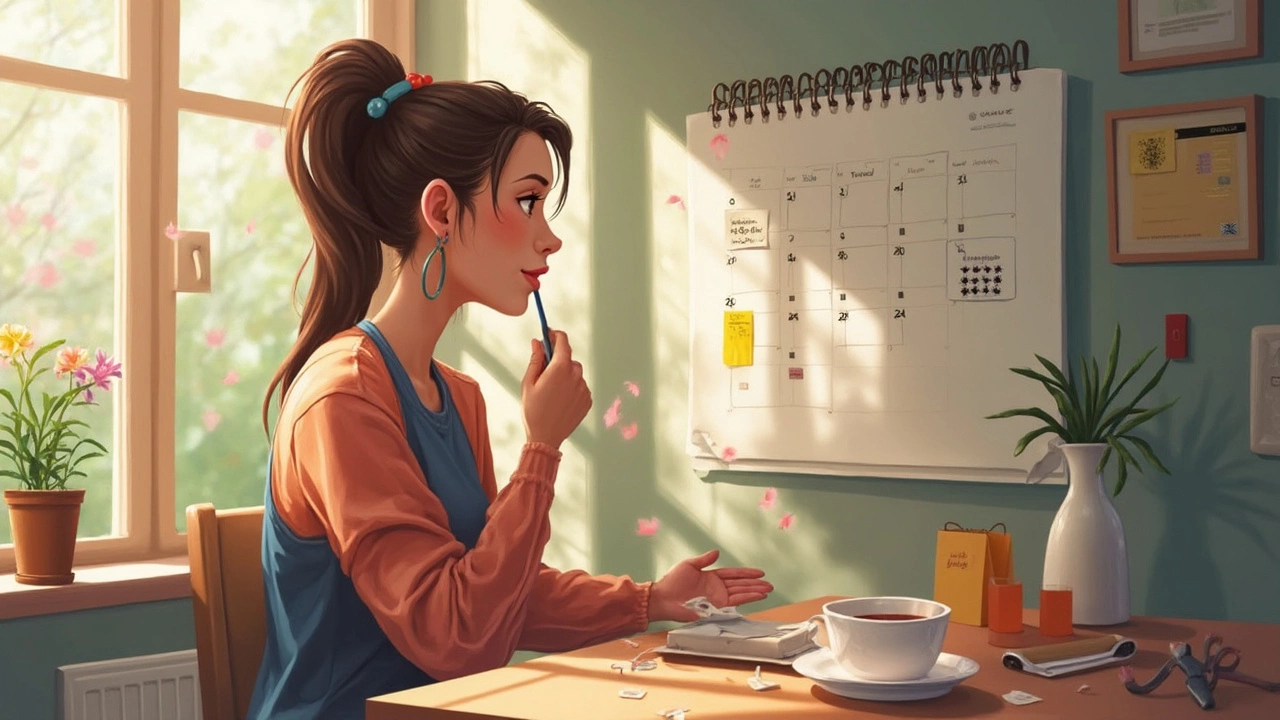If you’re limping out of a bedroom after tripping on your kid’s LEGO, you might question if that nagging pain is more than a bruise. Or maybe you’ve noticed that nagging ache in your lower back doesn’t go away, even when you finally get a moment to yourself on the couch. We all wonder if a locked shoulder is something we need to just push through—or is it finally time to see a physiotherapist?
Spotting the Signs: When Do You Need Physiotherapy?
Let’s be honest: most people don’t book physiotherapy at the first sign of discomfort. We’re all guilty of stretching things out at home or brushing pain off, especially when juggling work, kids, or pets who seem to think six in the morning is the perfect time for mischief (Looking at you, Luna). But bodies have a way of giving us increasingly loud hints. The classic reasons most people walk, hobble, or crawl into a physiotherapist’s office? Persistent pain, stiffness, limited movement, balance problems, and mystery injuries that just won’t heal.
A good rule: if pain or discomfort lasts more than a few days, or keeps coming back, it’s time to get help. Harvard Health Publishing noted in 2023 that untreated injuries or chronic pain can trigger bigger issues, making future recovery slower ((and often pricier)). For example, waiting out knee pain by favoring the other leg might quickly leave you with pain in both knees, a sore lower back, and a new resentment for stairs.
But it’s not just about pain. Ever tried going for a run and suddenly realized your knee feels “off?” Or found yourself breathless and uncoordinated after an ankle sprain months ago? Lingering problems with movement, balance, or strength after an injury are classic reasons to book physiotherapy. And if you’re feeling tingling, numbness, or weakness—especially after an accident or surgery—don’t tough it out. These can be signs of nerve issues that need professional care.
A 2022 UK survey of physiotherapy clinics found that almost 40% of clients delayed their first visit by four weeks or more, thinking things would “work themselves out.” Most reported regret, because symptoms had compounded by then—sometimes leading to longer rehab. Nobody wins the prize for waiting. The harder part is knowing whether that dull soreness or sprained ankle really needs physiotherapy, or if you’re just being cautious. Some hints: you can’t do normal activities (like lifting groceries or going up stairs) pain-free, you’re nervous about re-injury, or home treatments (think: RICE, stretches, over-the-counter meds) don’t deliver any relief after a week.
Older adults, people with chronic conditions, kids who play sports, and anyone working a desk job for eight hours straight (guilty) often see patterns of aches that aren’t just 'part of getting older'—they’re your body’s SOS. If you lose range of motion or strength, try to move a joint and it “locks” or grinds, or feel sudden sharp pain with movement, book that appointment. Worst case, you’ll get reassurance and tips. Best case, you’ll speed up healing, get back to your activities, and prevent a repeat performance.

What Does Physiotherapy Actually Do for You?
You might be picturing someone just telling you to ‘stretch more,’ but physiotherapy is way more than that old-school gym advice. Think of it as a full reboot for your movement, strength, and independence. Physiotherapists are trained to spot movement issues, design rehab plans, reduce pain, and help you move better—not just for now, but for the long term. It’s not just for professional athletes or people fresh out of knee surgery, either. Everyday problems—neck stiffness from phone scrolling, chronic headaches, sleep issues linked with poor posture—can respond really well to targeted physio.
Most sessions begin with a nerdy-sounding but super-useful assessment. Physiotherapists watch how you walk, stand up, reach, and balance. They’ll often do some hands-on tests to check joint movement, strength, and pain points. Harvard’s guidelines say this personalized approach leads to better results than 'cookie-cutter' routines because it pinpoints your specific needs. Next comes a custom plan—mixing exercises to build strength, manual therapy (like joint mobilizing and soft tissue work), and practical advice you can use between sessions. You’ll learn how to set up your desk, carry groceries, or get out of bed without making pain worse.
Physiotherapists can treat everything from frozen shoulders, arthritis, and tendon injuries to pelvic pain and jaw problems (yes, even TMJ trouble chewing pizza). Some specialize in post-surgery recovery, others help new moms with pelvic floor rehab, and some work with kids recovering from sports injuries. If Quincy went down at soccer practice, I’d want him seen by someone who’s worked with kids before—because they know how to keep it fun (and when to sneak in pirate moves for balance drills).
What really stands out? The focus on putting you in charge. Research from the Australian Physiotherapy Association shows that people who stick with their prescribed home exercises recover significantly faster and regain confidence sooner. That’s why therapists teach you what’s happening inside your body—turns out knowing why your Achilles tendon is inflamed, or how a core muscle’s supposed to work, makes a huge difference for motivation. One easy tip: if you forget exercise instructions, ask for a written summary or a short video demo. Most clinics provide these, and they beat scribbled stick figure drawings on a post-it.
And physiotherapy isn’t only about recovery—it’s preventive. If you keep having injuries in the same spot, or your job involves repetitive movements, a few sessions can help you avoid those future aches. Good therapists will adjust your plan if you hit a plateau, and check in on your home routine if progress stalls. Like any worthwhile health habit, it’s not a magic fix—even if Luna seems to think lying across my yoga mat counts as helping with stretches. Real gains come from showing up, doing targeted work, and practicing moves during commercial breaks or while waiting for your coffee to brew.

Tips for Making the Most of Physiotherapy (and Healing Faster)
Walking into your first physiotherapy session might feel awkward, but a bit of preparation goes a long way. First up: jot down your symptoms (what hurts, when, and what makes it worse or better). Bring this mini diary to your appointment—physios love details. If you’ve seen a doctor, had scans, or tried treatments already, bring those records too. Clear info about what’s worked (and what’s tanked) saves time and helps your therapist figure out what to do next.
Don’t be shy about asking questions—especially about how and when you’ll see improvement. Therapists expect you to be curious, and the best plans are flexible. Worried you’ll mess up an exercise at home? Snap a quick phone video during your session. Many physios offer email check-ins; some even have apps that send reminders and tips. It’s totally normal to hit a motivational slump after a few weeks (or start skipping home exercises), especially if pain isn’t as bad as it was. My trick: pairing stretches with an episode of my favorite show. Habit stacking like this makes it less of a chore.
Hydration, reasonable rest, and nutrition matter too. Chronic injuries can take longer if you’re running on bad sleep or skipping meals. If you’re already dealing with stress (I see you, parents of toddlers), let your therapist know—they can give tips for stress-safe movement, which helps you avoid tension-related flares. And if your pain suddenly gets worse, you spike a fever, or lose feeling or movement in an area, call your provider right away. These aren’t regular side effects from exercise—sometimes issues like infections or deep-vein clots can cause complications, and early action keeps you safe.
One big myth: that you only need one or two sessions, or that you should stop as soon as the pain fades. Most healing processes take weeks—not days—and lasting change comes from building up new habits and strength over time. You (and your therapist) will celebrate small wins: walking without limping, carrying groceries up stairs, tossing your kid without wincing. Those are major victories. Don’t get discouraged if things ebb and flow; ups and downs are normal, and progress is rarely a straight line.
Finding the right therapist is key. Watch for someone who listens closely, answers questions, updates your plan, and genuinely wants you to succeed. The best ones empower you—so eventually, you stay healthy without them. If something doesn’t feel right, or a technique just isn’t clicking, say so. Building trust means better results, and you deserve care that works for your life. No unnecessary gadgets, no generic sheets of homework—just a plan that gets you back to what you love, whether that’s gardening, wrestling with your kids, or racing your cat to the dinner table.
To sum it up: if injury, pain, or weakness is sticking around, don’t wait it out. Booking a consult with a physiotherapist can mean the difference between bouncing back quickly and slogging through months of frustration. Even if you think it’s no big deal, hearing from an expert and getting a personalized plan—tailored to your body and your goals—might be all you need to reclaim your routine (and chase after that sneaky cat).





